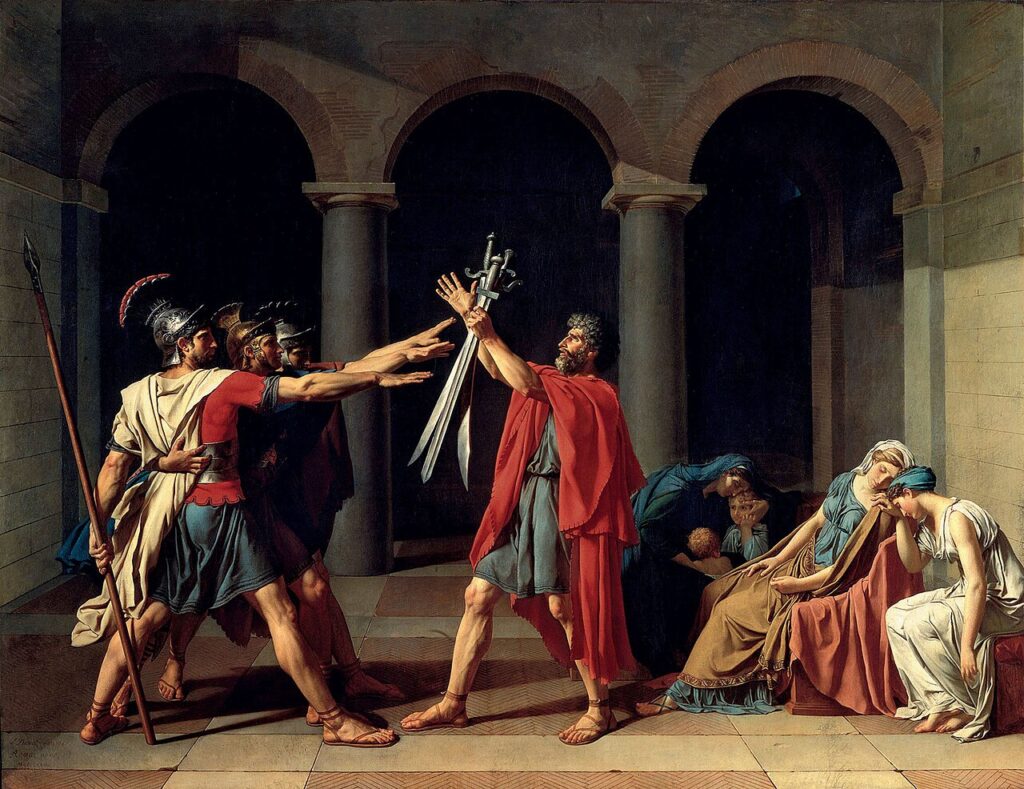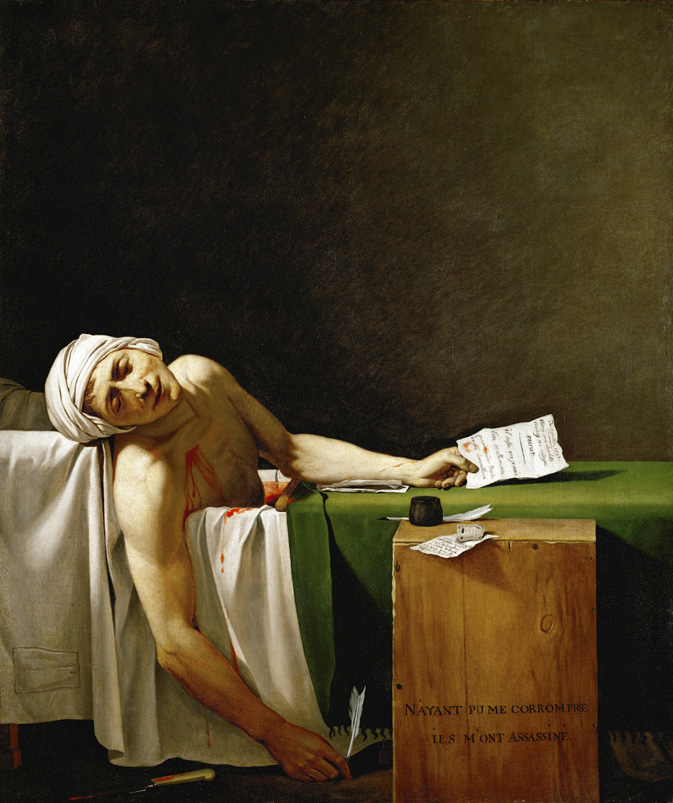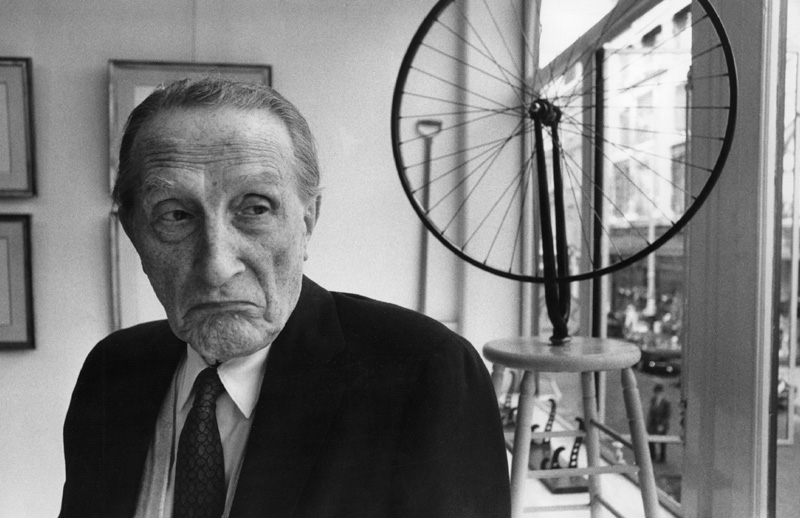Who was Jacques-Louis David?
In the annals of art history, few names resonate with as much significance as Jacques-Louis David, a titan of the neoclassical movement and a pivotal figure in the tumultuous landscape of the French Revolution. Born in Paris in 1748, David’s artistic talents blossomed under the tutelage of the renowned painter Joseph-Marie Vien, laying the foundation for a career marked by both artistic brilliance and political fervor.
David’s early works, such as “The Oath of the Horatii,” showcased his mastery of the neoclassical style, characterized by its reverence for ancient Greek and Roman art, its emphasis on moral clarity, and its celebration of heroic ideals. Yet, it was in the crucible of the French Revolution that David’s art truly came into its own, serving as a potent weapon in the ideological struggles of the age.

On view at The Louvre Museum
Among David’s most iconic works is “The Death of Marat,” a painting that reflects the power of art to shape narratives and ideologies. Completed in 1793, amidst the chaos and upheaval of the Revolution, “The Death of Marat” captures a moment of profound significance: the assassination of Jean-Paul Marat, a prominent revolutionary leader and champion of the Jacobin cause.
Marat’s murder, perpetrated by Charlotte Corday, a monarchist sympathizer, sent shockwaves through revolutionary France, elevating Marat to the status of martyr and galvanizing support for the Jacobin revolution movement. David’s portrayal of Marat’s death scene, with the writer slumped in a bathtub, his quill still in hand, serves as a poignant reminder of the sacrifices made in the name of liberty and equality.

Royal Museums of Fine Arts of Belgium
Yet, “The Death of Marat” is more than just a historical depiction; it is a work of propaganda, carefully crafted to advance the revolutionary cause. David, a fervent supporter of revolutionary ideals, used his art as a powerful tool to inspire fervent devotion among its adherents. Through his portrayal of Marat as a martyr, David sought to galvanize support for the revolutionary movement and underscore the righteousness of its cause.
A New Age Martyr
The parallels between Marat and traditional Christian martyrs are evident throughout the painting, serving as a deliberate commentary on the revolutionary agenda to supplant religious authority with secular values. Marat’s pose, reminiscent of Michelangelo’s “La Pieta,” evokes the iconic imagery of Christ’s deposition from the cross—a deliberate nod to the Christian martyrdom narrative. By positioning Marat as a secular counterpart to Christ, David effectively challenges the hegemony of religious authority and underscores the revolutionary goal of secularizing French society.
Furthermore, David’s composition of the painting reinforces the revolutionary narrative of martyrdom and sacrifice. The inclusion of the letter from Marat’s assassin, with its manipulative plea for mercy, serves as a stark reminder of the dangers faced by those who dared to challenge the status quo. By juxtaposing Marat’s benevolent figure with the treachery of his assassin, David underscores the righteousness of the revolutionary cause and the necessity of sacrifice in the pursuit of freedom and justice. The inclusion of the the letter which translated reads “My great unhappiness gives me a right to your kindness” sends the message that he was gracious and generous while she was manipulative, spiteful, and malicious. David casts him as a benevolent figure unjustly targeted by nefarious forces, further elevating his status as a secular saint.
Jacques-Louis David’s Politics
Stylistically, “The Death of Marat” diverges from the opulence of Rococo art favored by the aristocracy, embracing instead a neoclassical aesthetic that aligns with revolutionary values of simplicity and austerity. The stark black background, minimalist furnishings, and lack of ostentatious attire serve to underscore the revolutionary fervor that swept away the trappings of the old order and ushered in a new era of egalitarianism.

Yet, David’s own allegiances and motivations remain subject to scrutiny. Despite his initial fervor for the revolution, he later aligned himself with Napoleon Bonaparte, prompting questions about his true principles and convictions. His imprisonment in 1794, amidst the internecine strife among revolutionaries, further complicates the legacy of “The Death of Marat” and David’s role in shaping the course of history.
David’s reach in the 21st Century : Deathconsciousness

Fast forward to the 21st century, and we encounter “Deathconsciousness,” an ambitious double album by the experimental music duo Have a Nice Life. Through its immersive soundscapes and introspective lyrics, the album delves into themes of existential dread, mortality, and the search for meaning in the face of death.
In essence, the connection between these two artistic works lies in their ability to provoke deep introspection and contemplation about the human condition. Whether through the brushstrokes of a master painter or the ethereal notes of a musical composition, both “The Death of Marat” and “Deathconsciousness” invite us to confront our mortality and explore the mysteries of existence with courage and curiosity.




